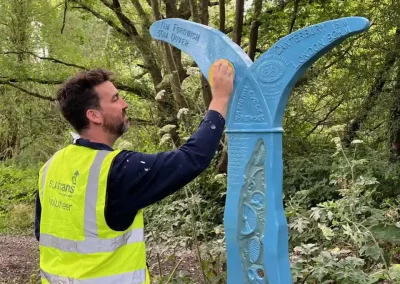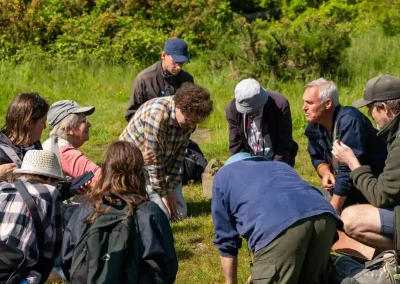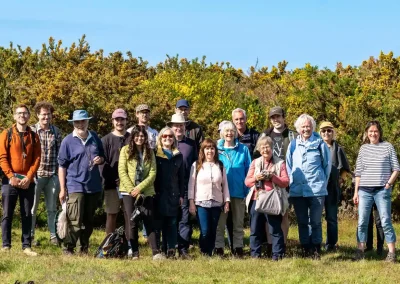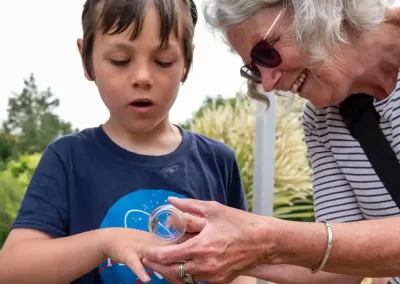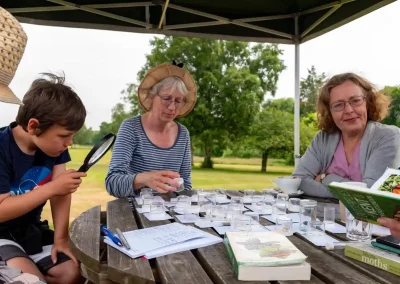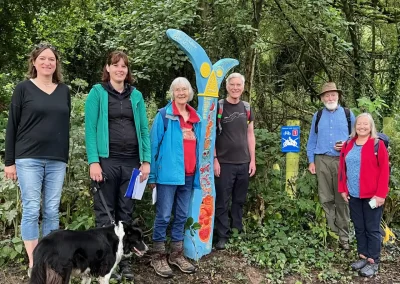Recreation
Walking and cycling
Many people enjoy cycling along the National Cycle Track between Canterbury and Fordwich, walking in the Old Park & Chequers Wood or following the long-distance paths which run through the area: the Stour Valley Walk, the Augustine Camino and the Canterbury Rings.
The cycle route is well used, both by local people for leisure and for commuting, and also by long distance travellers on National Cycle Route 1 which links Dover with Tain in the north of Scotland. Sustrans has obtained a grant for the upgrading of this section of the route to make it more accessible for wheelchairs.
However, many people remark on the lack of signage on the footpaths and tracks they are using – getting lost can be a problem! With this in mind the Friends of OPCW set up a Footpaths Working Group, which is working to improve footpaths and signage.
Invitations to join the group were published in the Newsletter of the Friends of OPCW and also went to walking and cycling organisations active in the area. The result was a very active group of around 20 interested individuals, including many Footpath Officers for the area and the Kent County Council Public Rights of Way Officer for the Canterbury District. So far the group has succeeded in getting one overgrown footpath cleared and has improved footpath marking.
Plans for the future are set out in the Action Plan produced by the Friends Group. These include:
- Working with KCC, Canterbury Golf Club, Sustrans and other key stakeholders to ensure that the path network on Old Park & Chequers Wood is well maintained and properly waymarked.
- Facilitating public access by installing information boards at strategic points with an overall map of the site.
- Developing leaflets giving self-guided trails of the site.
Other actions which are on the agenda for the Footpaths Working Group include:
- Community projects to clear overgrown footpaths. These would be like litter picks but would involve secateurs instead of litter pickers. Guidance would be provided about where and how to cut back
- Re-routing paths which have become overgrown. This applies particularly to the path numbered CC26 where the original route is covered in trees and bushes. People currently use an unmarked track which could become a permissive path
- Tidying up existing waymarking. This particularly applies at the end of the park closest to the city where the waymarking is idiosyncratic and patchy. Adding to the confusion the public rights of way are criss-crossed by many other informal paths
- Clarifying the rules about dog walking. While dogs and dog walkers are welcome in OPCW there is also concern about possible disturbance to ground nesting birds, especially in the spring and summer. Ways need to be found to warn owners that dogs should be kept on leads at times when birds are nesting.
If people are interested in joining the OPCW Footpaths Working Group they would be very welcome. Contact Jan Pahl on: j.m.pahl@kent.ac.uk or 07775 746144
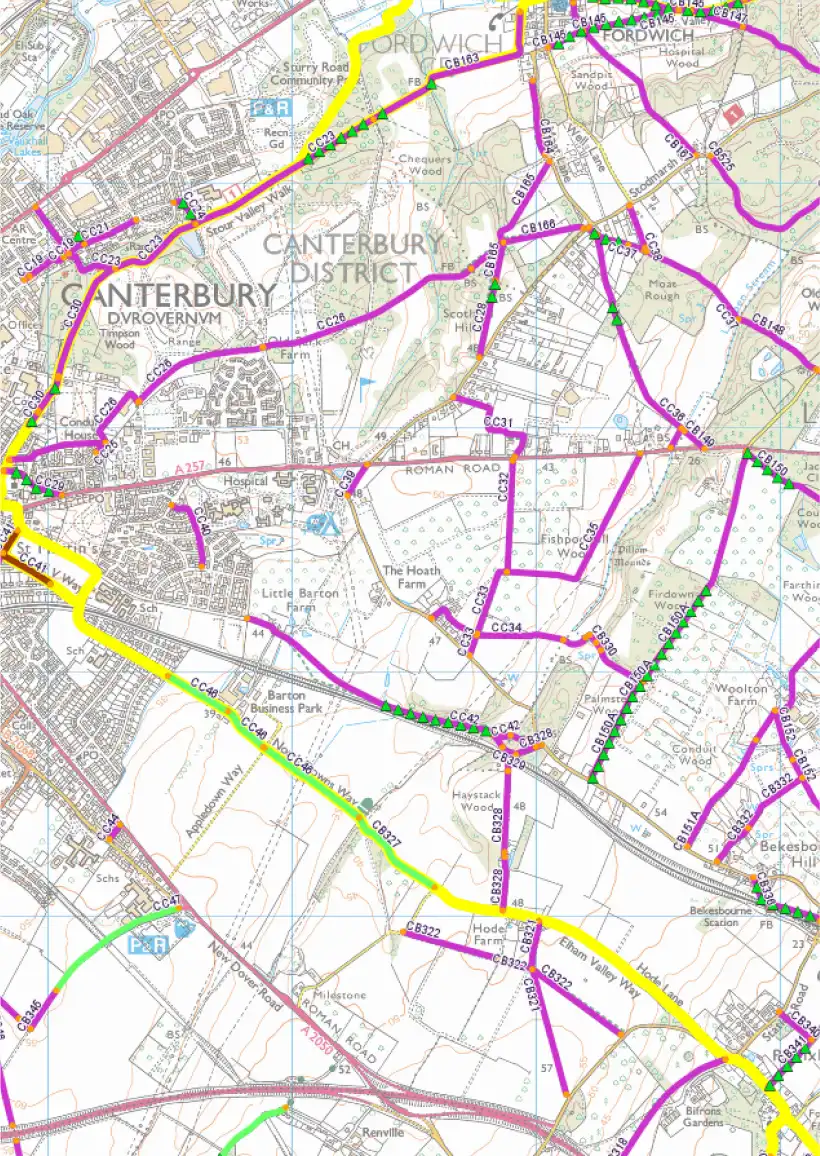
Recreation focused on wildlife and biodiversity
The wealth of wildlife in OPCW attracts many people to the area. The results of expert surveys are reported in another part of the website. Here we focus on the ways in which members of the public and amateur naturalists enjoy the wildlife and extend their knowledge of the many rare species to be found locally.
Guided walks have proved to be a popular way in which to introduce people to the wildlife of the area. The Friends of OPCW have organised many such walks, which have focused on a variety of different topics, including turtle doves and nightingales, bats, bees, rare plants, veteran trees, reptiles and amphibians. Other walks have focused on the archaeology and history of the area and on the geography and geology which shape the habitat.
Many skilled photographers have found Old Park to be an inspiration and there is a growing collection of wonderful photos of the area. These not only give pleasure but they also are the basis for a valuable historical record of the wildlife in this part of Kent at this time.
Increasingly there is recognition of the ways in which mental and physical health can be improved by access to open and green spaces. The local team of Social Prescribers is based in a GP practice very close to OPCW, offering an opportunity for enhancing the well-being of local people in very direct and convenient ways.
Plans for the future are set out in the Action Plan produced by the Friends Group. These include:
- To work together with conservation organisations to hold public engagement events including themed walks, to encourage local residents to appreciate the wealth of biodiversity and heritage on the site
- To work together with local community groups and health providers to use the site for the promotion of physical and mental wellbeing.
Children, young people and discovery
The area around OPCW includes some of the most deprived communities in Kent. In Northgate ward, adjacent to Old Park, 40 per cent of the children live in poverty. This means that access to open space is particularly important.
Members of the local community tell of parents, grandparents and even great grandparents playing in the Old Park, despite that fact that it was being used by the army for military training.
Many organisations used by local children and young people are located near to Old Park. It is fortunate that the Prince of Wales Youth Club is next to one of the entrances. This is a very dynamic, inclusive and successful organisation which offers a huge range of activities to the young people it serves. Other youth organisations adjacent to Old Park include Parkside Primary School and the Canterbury and District Early Years Project, a long-established, grass-roots organisation working in the Canterbury and coastal communities to provide support services to children and young people.
The presence of these and other organisations means that there are many opportunities for joint activities involving young people in activities in Old Park. Plans for the future are set out in the Action Plan produced by the Friends Group.
